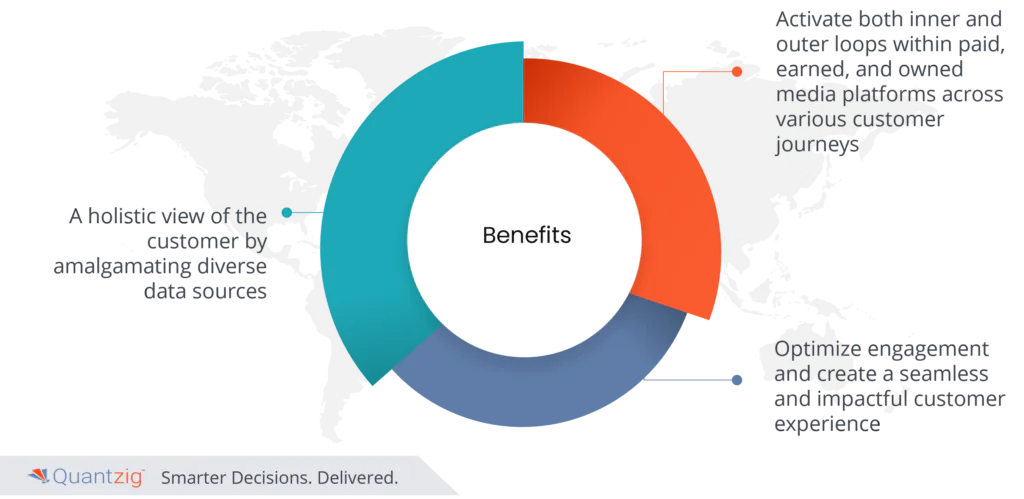Table of Contents
Introduction
In the age of digital transformation, businesses are leaving no stone unturned in their quest to enhance the customer experience. As consumer expectations continue to evolve, innovative strategies are imperative. This article delves into the fascinating intersection of technology and human behavior, illuminating how these two realms are converging to redefine the customer experience landscape. From subtle behavioral nudges to data-driven insights, this article explores the powerful tools and techniques that companies are leveraging to not only meet customer expectations but to proactively shape and elevate the customer journey.
Importance of Enhancing Customer Experience through Tech-Driven Behavioral Sciences & Nudge Innovations:
In the contemporary business landscape, customers have evolved beyond seeking simple transactions; they now crave meaningful connections with the brands they engage with. This shift demands a multifaceted approach from businesses. First and foremost, there is a need for continuous customer understanding, which involves the ongoing collection and analysis of data to gain insights into customer preferences, behaviors, and needs. These data-driven insights serve as the foundation for crafting personalized experiences. The concept of identifying the “next best action” indicates the use of advanced analytics and artificial intelligence to predict and recommend the most appropriate steps at different stages of the customer journey. This ensures that each customer interaction is not only relevant but also valuable.
Moreover, it is important to address specific nodes within customer journeys and micro journeys, breaking down the customer experience into smaller segments. This granularity allows for precise interventions at critical touchpoints, ultimately creating a seamless and exceptional customer experience.
In summary, it emphasizes the necessity of striving for “customer excellence,” signifying an ongoing commitment to exceeding customer expectations by refining strategies based on real-time insights and delivering personalized experiences. This approach enables businesses to establish strong, enduring customer relationships, innovative customer service techniques, and gain a competitive edge in today’s market.
Challenges/Problems faced while implementing Tech-Driven Behavioral Sciences & Nudge Innovations:
Managing customer journey data in today’s dynamic business landscape can be a formidable task. This data is often intricate, constantly evolving, and challenging to link and interpret for crucial functions such as identity resolution, determining the “next best action,” and executing swift and effective calls to action.
The challenge lies in striking the right balance. Overcorrection and excessive engagement can lead to what’s known as “brand creep,” where businesses inundate customers with communication that feels intrusive and irrelevant. To mitigate this, businesses must discern and prioritize the most significant, pertinent, and impactful interactions with their customers.
This necessitates a strategic customer experience innovation. By identifying key touchpoints and high-impact moments in the customer journey, businesses can optimize their engagement strategies. This approach allows for more personalized, timely, and contextually relevant interactions, fostering stronger customer relationships while avoiding the pitfalls of overcommunication. In essence, it’s about achieving a delicate equilibrium between data-driven engagement and respecting the boundaries of customer preferences to deliver a seamless and meaningful experience.
Benefits of implementing Tech-Driven Behavioral Sciences & Nudge Innovations:

Analytics powered by Artificial Intelligence (AI) and Machine Learning (ML) provide a holistic view of the customer by amalgamating diverse data sources. This integrated perspective enables businesses to derive actionable insights. By analyzing and understanding patterns, preferences, and behaviors, AI and ML facilitate the delivery of highly relevant and personalized actions. These actions can include tailored product recommendations, timely communications, and customized offers. Ultimately, this customer experience transformation strategy optimizes customer engagement, resulting in enhanced customer satisfaction, loyalty, and, consequently, more successful business outcomes. It leverages the power of data to create a more profound, individualized, and responsive connection between businesses and their customers.
Quantzig’s Behavior and Experience-based segmentation is a sophisticated approach that allows businesses to activate both inner and outer loops within paid, earned, and owned media platforms across various customer journeys and touchpoints. The inner loop refers to real-time, personalized interactions with individual customers, providing tailored content and experiences. The outer loop involves broader, strategic actions aimed at larger customer segments. This segmentation approach enables companies to harness the power of data to deliver highly targeted and relevant content, optimizing engagement and creating a seamless and impactful customer experience, enhancing the effectiveness of marketing efforts across different media channels and customer touchpoints.
Conclusion:
In the dynamic landscape of customer experience, the marriage of Tech-Driven Behavioral Sciences and Nudge Innovations has ushered in a new era of engagement. This synergy between data-driven insights and customer experience strategies empowers businesses to not merely meet but exceed customer expectations. As we conclude, it is evident that this transformative approach propels companies towards customer-centric excellence. It redefines interactions, brings innovation in customer experience, deepens connections, and places the customer at the epicenter of every strategy. In a world where experiences define brands, this fusion of technology and psychology is the cornerstone for those committed to delivering extraordinary and lasting customer relationships.


